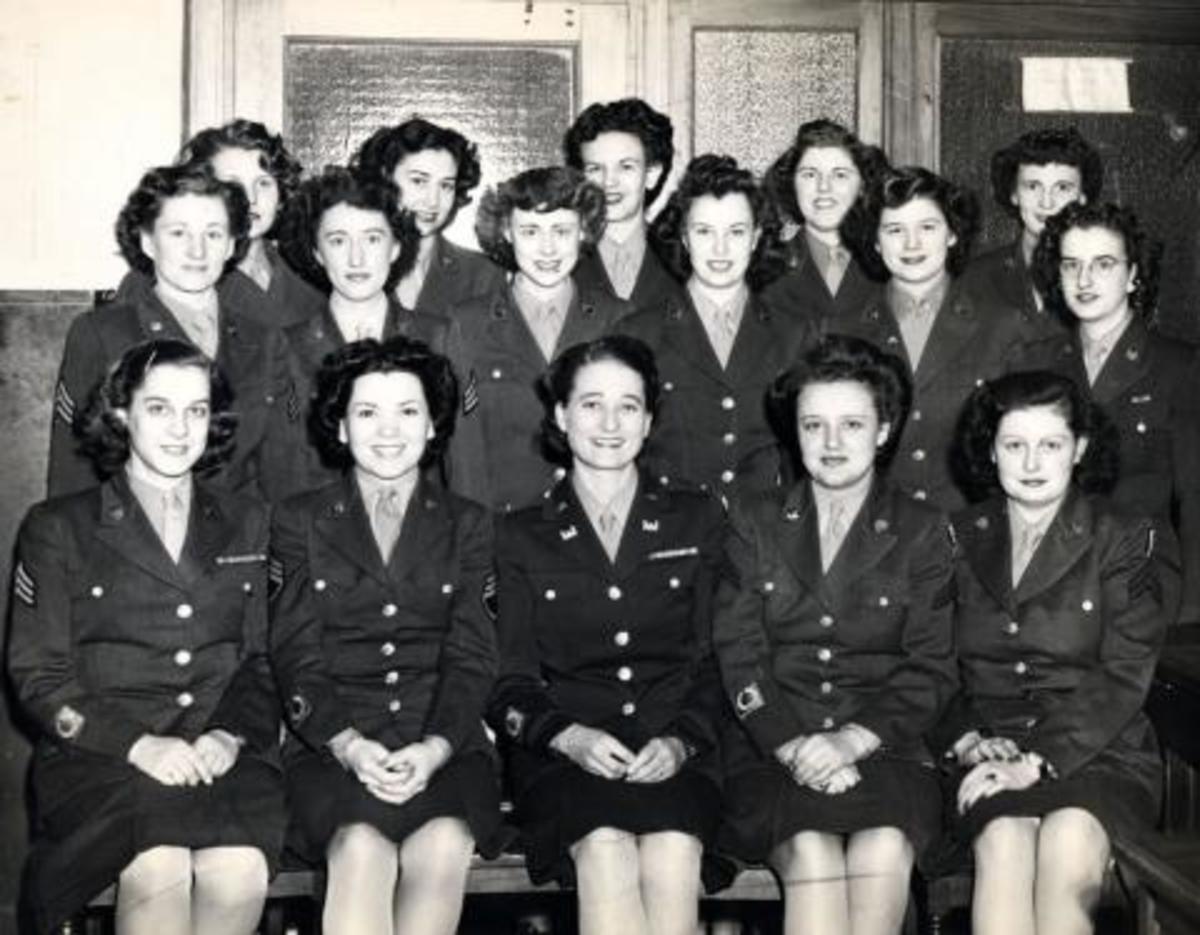- HubPages»
- Education and Science»
- History & Archaeology»
- History of the Modern Era
From Qualitative to Quantitative Restrictions on Immigration 1891-1924
The Immigration Station on Ellis Island
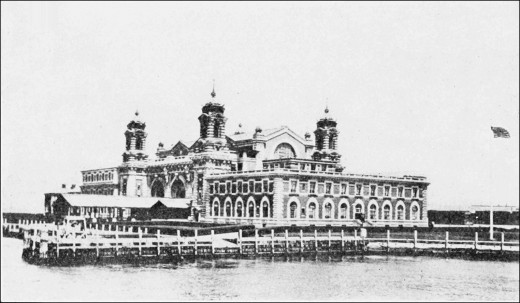
Immigration Restriction and Reform in the United States
Immigration restriction and reform has been a controversial subject since it was first considered. By what standards should immigration be limited and to what numbers? These are two of the main questions facing immigration regulation. The United States has attempted many different methods of regulation since its beginning. In the period of 1891-1924, immigration regulation shifted from qualitative to quantitative restrictions. This shift occurred over numerous acts and included legislation intending to drastically cut the numbers of migrants including the rejection of advertizing for immigrants in 1891. Other pieces of legislation, the 1892 Immigration Act and the 1903 Immigration Act restricted immigrants who were labeled as “likely to become a public charge” from entering the United States. This limited the number of working males coming to the United States. A third piece of legislation, put in place to restrict the quantity of immigrants coming to the United States, was the literacy test that was finally passed in 1917.[1] These three pieces of legislation: rejection of advertizing, refusal of entry to those seen as likely to become a public charge, and literacy tests all show increasingly specific limitations of immigration in both qualitative and increasingly quantitative measures to limit undesirable immigrants.
[1] Virginia Stewart. History 355: American Social History, Lake Forest College, Lecture, October 11, 2011.
A Group of Immigrants Arriving at Ellis Island
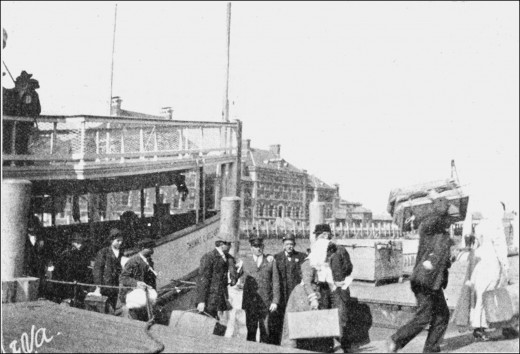
United States Immigration Photo Montage
Restricted Advertizing
The 1903 Immigration Act included a measure to stop advertizing for immigrants. While there were other more qualitative measures to this Act, the restriction of advertizing is a clear measure to reduce the numbers of immigrants entering the country.[1] This was a primary step leading to the shift from qualitative to quantitative regulation. Although this measure did not directly enforce the limitation of a quantity of immigrants, restricting advertizing for immigration to the United States limited who would be able to make the journey from their home countries to the United States. One of the central ideas behind restricting advertizing is that the immigrants who were enticed to respond to the advertizing were not discriminated as what was a desirable or undesirable immigrant. In this sense, advertizing was counterproductive for encouraging desirable immigrants and discouraging undesirable immigrants because it advertized immigration to both categories.[2]
[1] Susan F. Martin, A Nation of Immigrants (New York: Cambridge University Press, 2011). 133.
[2] Martin, Nation of Immigrants, 132-133.
Immigrants Lined Up and Waiting for Their Medical Examination
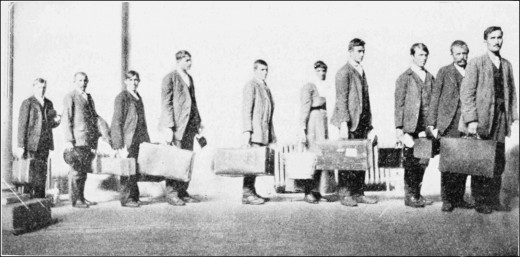
The "Likely to Become a Public Charge" Measure
A second piece of legislation in the shift toward quantitative regulation from qualitative regulation is the measure that increased restriction based on the likely to become a public charge measure, which was put in place by the Act of 1892 and strengthened in the Immigration Act of 1903. This measure was used mainly against women, children, and the sick. In name, restricting those who are likely to become a public charge is a qualitative restriction. However, since the INS was given discretionary control over mandating who was considered likely to become a public charge this legislation was manipulated into a method of limiting the number of immigrants entering the country.[1] The fear of immigrants taking from the average person rose from stereotypes generated from a low percent of the immigration population. In 1907, the Dillingham Commission studied these immigrant stereotypes in hopes of strengthening restrictions such as the likely to become a public charge restriction; however it found that immigrants were no more likely than US citizens to become public charges, and ultimately discredited the reasoning behind some qualitative restrictions.[2] Yet, the restrictions remained in place to limit the number of immigrants. Unlike the advertizing restriction, the likely to become a public charge measure directly increased the ability of the INS to restrict immigration in larger quantities.
[1] Martin, Nation of Immigrants, 136-137.
[2]Martin, Nation of Immigrants, 137.
Undesireables Awaiting Deportation
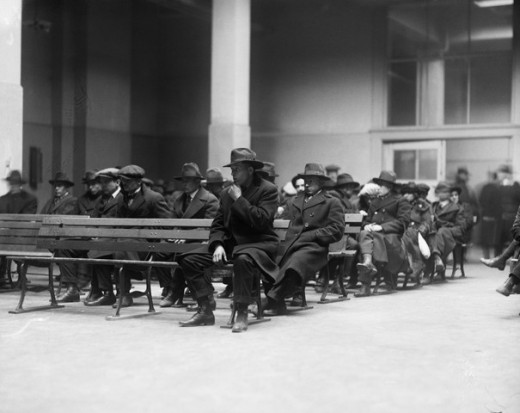
Introduction of Literacy Tests
The third restriction,the literacy test, was finally passed in the 1917 Immigration Act after years of failure in the legislature.[1] The addition of the literacy test was qualitative in the sense that it restricted the migration of people who were not educated and who came from less developed countries. If the people were not considered equal to those who were considered to be the average American citizen, then they were unwanted. It was also thought that more educated people would be easier to assimilate into American culture. However, the Dillingham report showed that immigrants living in the United States did not have a lower literacy level than American citizens, discrediting the idea that the goal of the INS was simply to hold immigrants to the current standard of US citizens. Despite its qualitative restrictions, the lobbyists of the literacy test, including those on the Immigration Restriction League, hoped that it would have the quantitative effects to limit immigration that they had been looking for. For these lobbyists, restricting the number of immigrants was a main goal of their work.[2] A main goal for the literacy test was to include a qualitative measure that would have drastic effects on the quantity of immigrants who would qualify for entry. Although this was not strictly a quantitative measure, the literacy test shifted immigration regulation further towards quantitative restriction and toward the beginning of a national quota.
[1] Martin. Nation of Immigrants, 142.
[2] Martin. Nation of Immigrants, 139.
A Family's First Photograph at Ellis Island 1913
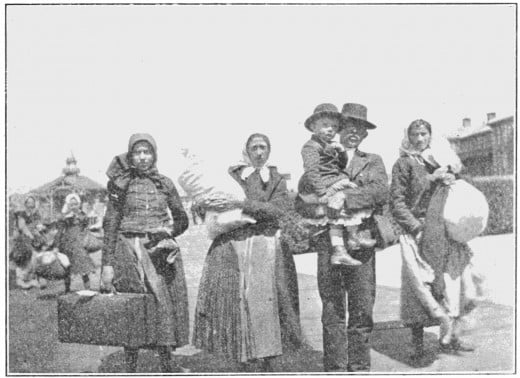
Conclusions
These three acts of immigration, among others, are precursors to the quantitative limitation of immigration in the National Quota Act of 1924. Each is categorized as qualitative restrictions, and yet they also have quantitative restriction implications. The goal of both qualitative and quantitative restrictions was to limit the number of immigrants coming into the country, especially those deemed undesirable. Each is important in understanding the reasoning behind the National Quota Act of 1924, why it lasted until 1965, and why still today we have a quantitative cap to the number of immigrants we allow to move into our country.







